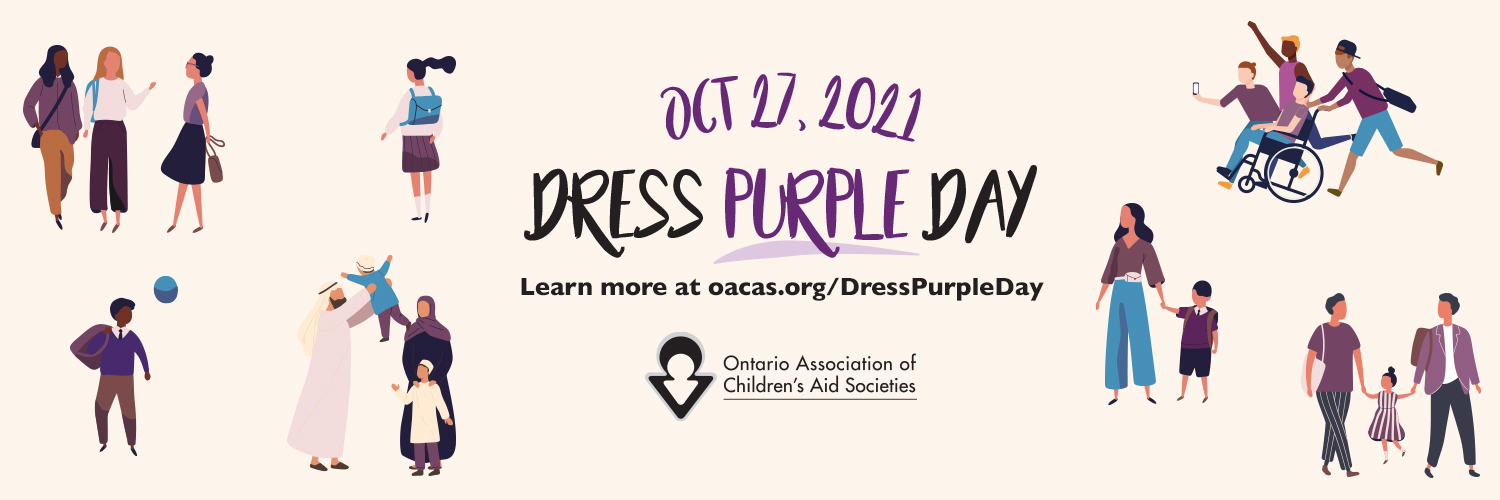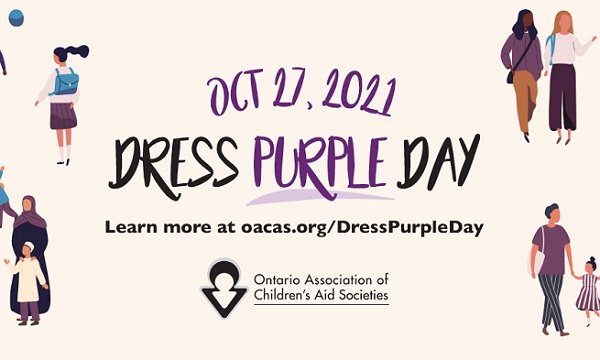From Nicole Bonnie, CEO, OACAS
For nearly 30 years, Children’s Aid Societies in Ontario have used the month of October to remind the public about their role in keeping children and youth in their communities safe from abuse and neglect.
In 1992, the “purple ribbon campaign” started as a local community initiative in the Greater Toronto Area with a focus on child abuse education. The campaign evolved from there to a province-wide, month-long campaign called Child Abuse Prevention Month. Every October, Children’s Aid Societies, OACAS, and our partners in government and the community worked to teach the public about the signs of abuse and neglect, and their duty to report worries of maltreatment to Ontario’s child welfare system. The campaign grew over time, and in 2017, the month of October was proclaimed as Child Abuse Prevention Month in the Ontario legislature.
But what we now understand, is that the campaign’s success also came with a price.
Vulnerable and marginalized families—especially from Indigenous and Black and African Canadian communities—have told us that the campaign’s emphasis on reporting led to an unwarranted increase in surveillance of their families and communities. In many ways, the campaign was more harmful than helpful.
And so, this year, I’m proud that our new campaign direction reflects our commitment to equity and addressing the overrepresentation of Black and Indigenous children and youth in child welfare. We are no longer using “Child Abuse Prevention Month” and are actively encouraging our partners, including our members, government stakeholders, and provincial associations, not to as well.
Instead, the Dress Purple Day campaign is about supporting Ontarians facing challenges and ensuring children, youth, and families have access to the supports, information, and resources they need. We are using Dress Purple Day to build stronger partnerships with our members and cross-sector providers to focus on strengthening families through enhanced community-based prevention and early intervention. It’s also an opportunity to remind anyone making referrals to child welfare to check their biases (both conscious and unconscious), because we know that racism, prejudice, and discrimination based on race, ethnicity, religion, ability, poverty, and sexual orientation can lead to the overreporting and oversurveillance of families in certain communities.
Dress Purple Day is also a reminder to young people that they have rights to safety and well-being, and that goes beyond what we often think of when we use those words. It’s critical to understand that those rights extend beyond physical bodies—they have the right to be safe emotionally, spiritually, and culturally. They have the right to have their intersectional identities, which includes culture, race, sexual orientation, gender identity, and gender expression, protected and supported in all spaces.
So, join me, this year on October 27 and dress purple to show that you’re part of the community that cares for children, youth, and families. The COVID-19 pandemic has shown us what is truly important in life. And that’s our loved ones—our family, friends, neighbours, and community members. Let’s make sure they all know that no matter the challenge they are facing, services and resources that meet their cultural and identity-based needs are available. They have the right to the most appropriate kind of support, and we are here to help them find it. No one is alone.
Learn more about the Dress Purple Day campaign at oacas.org/dresspurpleday or find supports in your community by visiting oacas.org/resources.


You must be logged in to post a comment.